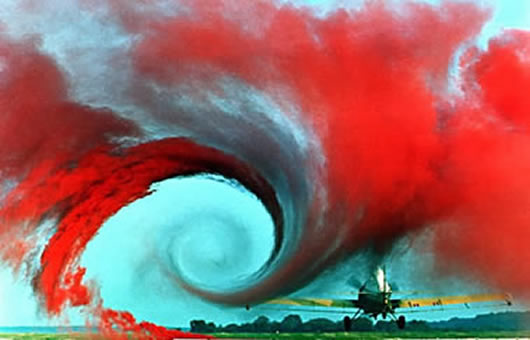
All pilots need to be aware of wake turbulence. Depending on the type of aircraft, the phase of flight, and the weather conditions, the potential effect of an aircraft’s wake turbulence on other aircraft can vary. Encountering wake turbulence can be especially scary and hazardous during the landing and take-off phases of flight, where the aircraft’s close proximity to the ground makes a recovery from the turbulence-induced problems more difficult.
Wake turbulence is the ‘disturbed air left behind an aeroplane’. This does not, however, mean that wake turbulence only affects aircraft directly behind, but also just below. At one time, it was thought that the rough air behind and below an airplane in flight was caused by the propeller slipstream. This turbulence is actually caused by air spilling over the wing tips and forming tornado-like vortices. Wake turbulence also includes thrust stream turbulence, jet blast, jet wash, propeller wash, and rotor wash both on the ground and in the air.
Weight turbulence categories are determined by the aircraft’s Maximum Certified Take-off Weight (MCTOW):
| DEFINITION | WEIGHT (MCTOW) | EXAMPLE |
| LIGHT | Less than 7 000kg | Cessna 402 |
| MEDIUM | 7 000kg – less than 136 000kg | Beech 1900D |
| HEAVY | 136 000kg or more | Boeing B747 |
Specific time or distance separations apply, depending on the phase of flight, for example: Cruise, take-off or landing. Not obeying these limits can have dangerous consequences, including:
- Induced roll and yaw
- Structural damage
- Complete loss of control
So how should you avoid these sweat-inducing situations?
- Do not get too close.
- Stay above the leading aircraft’s flight path.
- Take caution when there is light wind.
In The Essential Radio Book we show you what the limits are, based on categories, and our clever graphics will help you understand how to apply these.




Trackbacks/Pingbacks